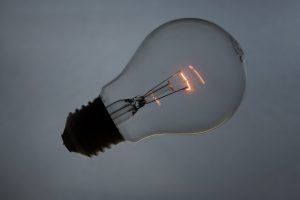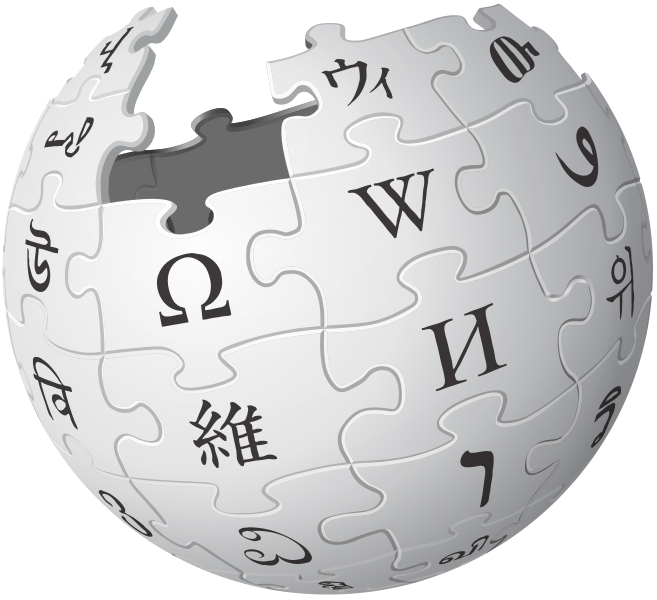Wikipedia is one of the most widely read websites on the Internet, and a major source of information for people across the globe – including students. Wikipedia articles are free and open to anyone who clicks on a link, and anyone can make edits to the site as well. While this can be problematic – information changes rapidly and misbehaving users can add bad information – Wikipedia has many more good editors than bad, a supportive community, and both human and computer-based fact-checkers and monitors to ensure the health of the Wikipedia environment. In the age of fake news, Wikipedia, a constantly growing and improving online encyclopedia, is actually one of the better sources of information on the web.
In addition to being a good source of first-glance information, it turns out that the world’s most popular online reference work is an ideal medium for students to learn how to write for a public audience. This skill is useful in just about any profession and is one that traditional assignments don’t often cover. Exams and papers rarely see the light of day after they’re completed. Information added to Wikipedia, on the other hand, is more likely to have a permanent effect. It’s also a space where students can learn how to do research and cite sources for information that can reach a wide audience. Being able to navigate a flood of information and choose reliable, reputable sources to identify facts is essential to information literacy and a core part of Emory’s Nature of Evidence Quality Enhancement Plan.
The Wikipedia Education Foundation, a branch of the non-profit Wikimedia Foundation that’s behind Wikipedia, provides a platform for faculty to set up a Wikipedia editing assignment for their class. The WikiEdu platform allows instructors to directly track and view student edits to articles they’re working on. Students are given instructional modules that walk them through the process of editing on Wikipedia. Using this platform, faculty can set up a successful Wikipedia editing assignment that is easy to grade, and students have a viable space for seeking and using quality resources, as well as writing content for a general audience. Wikipedia editing assignments make good alternatives to midterm or final papers and many instructors have successfully done this.
How Wikipedia Editing Works
Anyone can edit Wikipedia, and this process has been made easier with a simple visual editing tool (it used to all be hand-coded, which was a barrier to many would-be editors). It looks rather like editing in Word or WordPress, with buttons for adding references, font size, and links. Simply log in and click on “Edit” on a page and start working. Every user also has a “Sandbox” where they can practice their edits or make a rough draft before putting the information in the actual article.
Adding references is an important part of Wikipedia editing. The second of Wikipedia’s Five Pillars – a basic set of guidelines for editing – states that “Wikipedia is written from a neutral point of view.”  It’s not a place for opinions, finding the “truth” or “making an interpretation,” but for straight facts. Everything written in Wikipedia must be backed by a reputable source.
It’s not a place for opinions, finding the “truth” or “making an interpretation,” but for straight facts. Everything written in Wikipedia must be backed by a reputable source.
Wikipedia is an open environment, so just because an edit to an article is made does not make it permanent. Editors can challenge changes made by other editors. There is an entire system for challenging and recommending edits, including a “Talk” page for every article where editors can discuss changes they make or want to suggest. As you can imagine, articles about controversial topics (the 2016 Presidential race) or topics that people are passionate about (cats on the Internet) have some lively discussions on their Talk pages. Individual users also have Talk pages where other editors can leave them messages.
Another important part of the Five Pillars is to treat other editors with respect. Being civil and objective when discussing a topic is part of Wikipedia etiquette. Trash-talking, aggression or foul language are not tolerated and can result in being banned by an administrator.
Getting Started with the WikiEdu Platform
Working with the Wikipedia Education Foundation platform is the easiest way for faculty to do a Wikipedia editing assignment. To set up a course, first create a Wikipedia account and then login to the dashboard to create a new course. There are standard course formats to choose from (such as 10, 12 or 16-week courses) that will help you plan out time for students to train on Wikipedia editing, conduct research and make edits. Once your course is created, you can add students, which will allow them access to training materials and let you see their work in Wikipedia.

Take some time to really plan what you want your students to achieve and the benchmarks you want to set. First, consider whether this type of assignm
ent will work for your course. If the answer is yes, here are some questions to consider:
- What topic(s) should they edit?
- How much content should they add?
- How much time do they need to get trained in editing and complete the assignment?
- Will they turn in a short paper or other related assignment to reflect on their experience?
- What will the grading criteria be?
- How will you tie in the assignment with course content?
For help getting started, you can contact WikiEdu to get in touch with a local representative. Emory faculty can also contact me (Jenn Young) in Teaching & Learning Technologies for help with planning the assignment, setting up a course, and instructing students on editing Wikipedia.
Tips for Success
Wikipedia is a great place to give students the opportunity to do research and contribute information for the sake of public knowledge – and learn a lot about their chosen topic in the process. Because of the dynamic nature of the Wikipedia environment (other editors and editing rules, for example), some best practices are in order to make the most of it in an academic setting.
- Competency – Make sure your students can not only edit Wikipedia, but also understand the culture of Wikipedia. While there are no hard and fast rules (Wikipedia is not a bureaucracy) – there are best practices and guidelines in place to point editors in the right direction. A few good resources on Wikipedia guidelines include:
- New vs. Existing Articles – It is easier for students to add information to existing articles than for them to create completely new articles. The standards for a brand new article are very high – they must include substantial information to support why the topic is notable or the article may be deleted. See the next item for more information.
- Deleted Content – Sometimes, articles or information that students work on get deleted. This is a result of the editing and review process of Wikipedia. It’s important to be aware of this and to not base grades on whether or not the information they added “stuck.” It doesn’t mean that the information they added was bad, just that another editor changed it or nominated the article to be deleted. Note that you can always see student edits in their user history, so even if it gets removed you can still access it for grading.
- Grading – You can review a student’s edits by looking at their contribution history on their Wikipedia user page. This will be your main source of content to grade for the assignment. Some instructors choose to have students also write a brief summary of their research and experience with editing Wikipedia as an additional grade component. The Wikipedia Education Foundation has a guide for grading that emphasizes quality over quantity.
Editing Wikipedia for a class assignment develops students’ ability to create content designed for people who are learning about a new topic or seeking new information about a familiar one. It requires that they be able to understand the topic thoroughly so that they can see what information is already written in the article and what information is missing. It encourages responsible exchange of information, hones their research and citation-seeking skills, and emphasizes the importance of reliable sources and facts. There is a slight learning curve, but that’s where the WikiEdu dashboard and personalized help from the WikiEdu Foundation and TLT come in. Check back here soon for another post about an Emory professor’s own experience with a Wikipedia assignment!
Header photo from Wikipedia
Book photo by Sharon McCutcheon on Unsplash
WikiEdu photo by Wikipedia Education Foundation
Lightbulb photo by Robert Wiedemann on Unsplash
